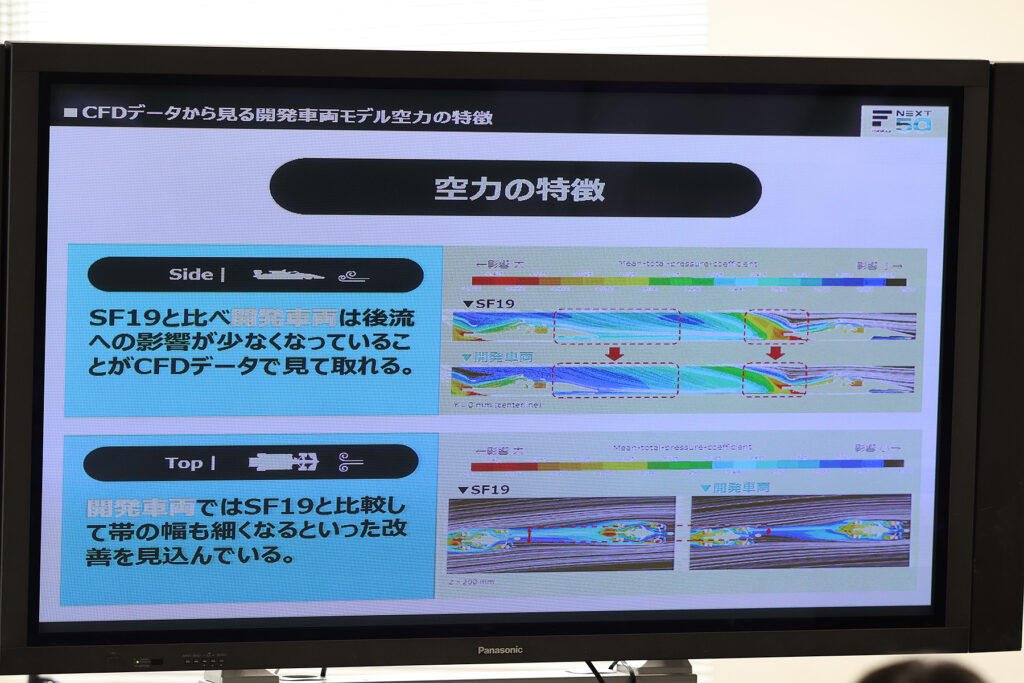During the recent Motegi round of the Super Formula series, a press conference was held detailing aerodynamic revisions being developed for 2023, which fall under the series’s Next 50 plan.
The changes, though not as extreme, follow a similar principle to F1’s 2022 regulations in that they look to reduce outwash from the front wing and force the plume from the diffuser up at a steeper angle. It is hoped these aims will be achieved through the use of a revised front wing and rear diffuser, with a potential 50% reduction in dirty air for a following car being touted.
Two SF19 test mules have been running a test program throughout the year, and have racked up 8,076km across the Fuji, Suzuka, Autopolis and Sugo tracks; of this mileage, 1,572km has apparently been dedicated to aero testing.
In addition to the aerodynamic changes, which it is hoped will improve passing during races, Super Formula’s Next 50 plan also encompasses reducing the series’s carbon footprint through the use of more sustainable materials.
For example, new tires from supplier Yokohama use recycled rubber from scrap tires along with several naturally derived compounding agents, such as silica from rice husks and oil from oil palms and orange peels, in their production. The materials chosen do not negatively affect the performance of the racing cars, Yokohama says. Super Formula also has plans in place to use Swiss supplier Bcomp’s flax fiber-based composites for some elements of the cars’ bodywork.
For those fluent in Japanese, the press conference can be found here, but English subtitles are not available.



